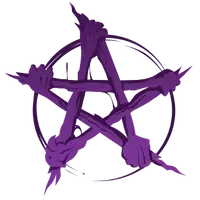Table of Contents
Egyptian Witchcraft, more commonly referred to as Heka, is the practice of using spells and incantations to cast magic and achieve desired outcomes. It has been a part of Egyptian culture for centuries, and its use is believed to be a common practice amongst high priests and priestesses. Heka is a way of connecting with the ancient gods to ask for their assistance in achieving one’s goals.
Heka is a complex form of magic, and practitioners must understand the secrets of the universe to gain access to its power. It involves rituals, spells, and invocations that must be performed correctly in order to work. There are a variety of techniques employed in the practice of Heka, including astrology, divination, and meditation. The spells and incantations that are used in Heka are meant to call upon the power of the gods, as well as the power of the practitioner themselves.
Heka is a powerful form of magic, and it is important to be aware of its potential risks. It can be dangerous to use Heka without the proper knowledge and guidance. Therefore, it is important to seek the advice of an experienced Egyptian Witchcraft practitioner before attempting to cast any spells or use any other form of magic. Additionally, it is important to use the spells responsibly, as they can have powerful and unpredictable effects.
The History of Egyptian Witchcraft
The history of Egyptian witchcraft is deeply intertwined with the culture and belief systems of ancient Egyptian society. Throughout Egyptian history, magic was used to treat various ailments, gain protection and good luck, and solve disputes. Magic was regarded much in the same way as modern-day prescription medication, with people seeking out the assistance of spell casters to provide a magical solution to their problems.
One of the most famous types of spells used in Egyptian witchcraft is the clay or wax figurine ritual. These figurines were used in a variety of ways, including for breaking the power of an enemy, for protection, for divination, and love spells. In this ritual, a figurine was made of the desired target, and then the spell caster would perform incantations, recite prayers, and make offerings to break the power of the enemy. It was believed that the ritual would cause the person to feel a sense of helplessness and submission.
Another type of spell widely used in Egyptian witchcraft was the use of talismans and other charms. Amulets were believed to be powerful tools for protection and good luck, and people would often wear them or keep them at home to ward off evil spirits and bad luck. Furthermore, spells and incantations were often used in conjunction with amulets to further enhance their powers.
The practice of Egyptian witchcraft was also closely tied to the worship of various gods and goddesses. Spells and rituals were used to ask for the favor of these deities or to offer thanks or offerings to them. Priests and priestesses also played a major role in invoking these gods and goddesses in rituals and spells to gain protection and good fortune.
Overall, the history of Egyptian witchcraft is a long and fascinating one, with many different spells, rituals, and charms being used to deal with all kinds of problems. From breaking the power of an enemy to providing protection and good luck, the ancient Egyptians used powerful magic to help them in their everyday lives.
The Egyptian Gods and Goddesses
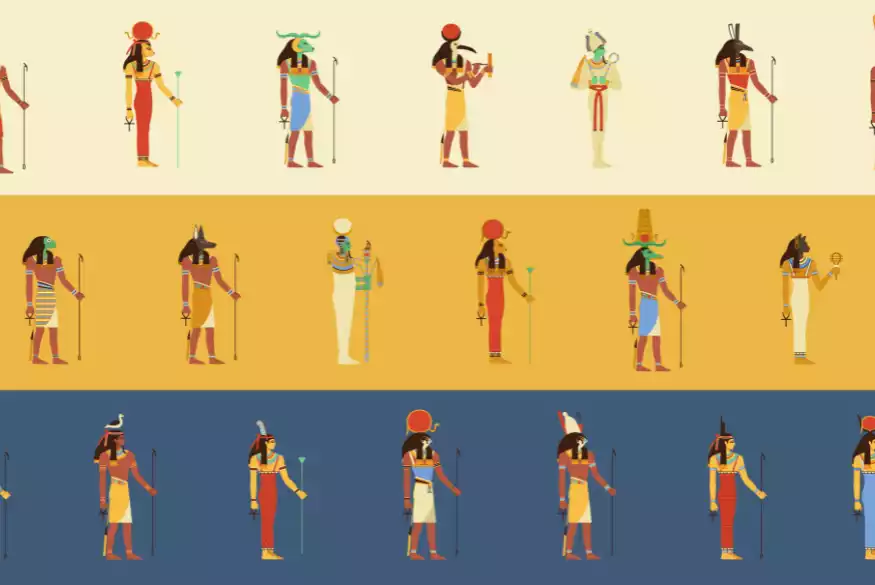
The ancient Egyptian pantheon is filled with gods and goddesses whose majestic stories have been passed down through civilizations for thousands of years. Most of the deities were worshipped within their respective cults, with a number of them held as the main gods and goddesses of the Egyptian people. These powerful gods and goddesses each had a specific domain that they were seen to rule over and influence, from creation and fertility to death and the afterlife.
The two most widely known gods of ancient Egypt were Amun-Ra and Isis. Amun-Ra was the chief god of the pantheon, originally a local deity of Thebes, who was later elevated to the status of a national god. He was considered to be the ruler of all gods and was associated with the sun, air, and fertility. Isis was a goddess of fertility, motherhood, and magic. She was believed to have the power to bring the dead back to life and was often seen as a protector of the pharaohs.
Let’s take a look at the ten most noteworthy Egyptian Gods and Goddesses
Isis
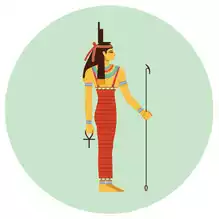
Isis was the beloved goddess of ancient Egypt, revered for her roles as a protector, mother-goddess, and guardian of the natural world. Highly esteemed by both men and women, she was seen as a source of strength and stability in a chaotic world. People prayed to Isis for love, health, fertility, marriage, and protection from evil forces.
Festivals and rituals were often held in her honor, and her temples were incredibly popular pilgrimage sites. She represented power and order in an otherwise unpredictable universe – providing guidance and reassurance during times of stress or doubt.
As the Queen of Heaven, Isis was believed to grant mortals divine knowledge and wisdom – allowing them to better understand their place in the universe. Her ability to bestow magical powers upon those pure of heart made her particularly powerful amongst ancient gods. Worshippers believed that if they prayed sincerely enough to Isis, then she would answer their prayers – granting them peace or success depending on their plight.
In addition to being a source of strength during difficult times, Isis also provided comfort during times of grief. It was said that Isis could bring loved ones back from the underworld, thus making her a symbol of resurrection as well as hope for a brighter future.
Osiris
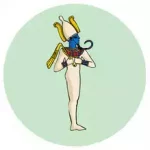
Osiris was an integral part of Ancient Egyptian mythology and is still worshipped by many today. He is considered to be the Lord of the Underworld and the Afterlife, as well as the god of resurrection and fertility. As the first son of Geb and Nut, he was commonly seen as a symbol of divine kingship and rulership. Osiris was married to his sister Isis, and together they had a son named Horus.
Tragically, Osiris was murdered by his own brother, Set, who was jealous of his power and influence. Set dismembered Osiris’ body and scattered the pieces across the land, leading to a dramatic search by his devoted wife, Isis. Eventually, Osiris was resurrected and given a place in the afterlife. With the help of his son Horus, Osiris was able to defeat Set and avenge his death.
The story of Osiris’s death and resurrection is often seen as a representation of the cycles of death and rebirth and the never-ending quest for balance in life. His role as the Lord of the Underworld has been a major influence in Ancient Egyptian culture and beliefs and is still remembered to this day.
Horus
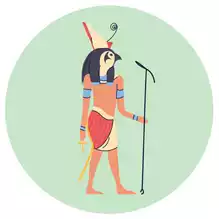
Horus was an ancient Egyptian god of the sky, closely associated with the sun and moon.
Horus was an integral figure in ancient Egyptian religion and mythology, revered for his protective powers, association with the afterlife, the sun and moon, and symbolic representation of resurrection and rebirth. He was generally depicted as a man with the head of a falcon, symbolizing his connection to the heavens. As the son of Osiris and Isis, two of the most important gods in the pantheon, Horus was believed to be the protector of the Pharaohs, granting them authority and power, and also providing protection to travelers, and warding off evil forces.
In addition, Horus was seen as a symbol of hope and renewal, a reminder of the power of the gods and the possibility of transformation. The Pharaoh was said to be an incarnation of Horus, and the god was associated with protection from disease and famine. His influence continues to be seen in modern culture, and Horus is still celebrated as a powerful symbol of power, protection, and renewal, a reminder of the ancient gods and their role in our world.
Ra
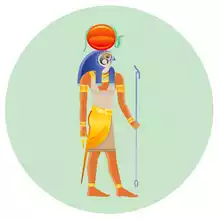
Ra was the powerful sun god of ancient Egypt, revered as the creator of the universe. He was often depicted as a falcon-headed man and associated with strength, power, and rebirth.
The people of ancient Egypt believed that Ra rose in the east each morning to bring warmth and light to the world. At night he sailed across the sky in his boat, bringing rest to those below. It was also believed that every night he battled against Apep – a giant serpent – who threatened to plunge the world into darkness.
For many Egyptians, Ra represented the cycle of life, death, and rebirth – providing guidance and hope for their journey toward eternal life. He was believed to watch over them from above, protecting them from harm and granting them prosperity. His wisdom provided reassurance during times of difficulty or doubt, and his healing powers could cure diseases or bring fertility where none had been before.
Ra’s benevolence extended even beyond humans, however; it was said that any creature could call upon him for help at any time – regardless of whether they were deserving or not. This made him highly respected amongst all living things; birds would fly around his head with joyous cries, while cats held particular reverence for him due to their connection with Bastet (the daughter of Ra).
Ra is undoubtedly one of the most important gods in ancient Egyptian mythology due to his association with power, strength, and rebirth, virtues that still remain relevant today in our modern world.
Hathor
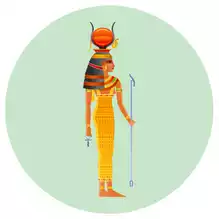
Hathor was an ancient Egyptian goddess of love, beauty, music, fertility, and motherhood. She was often depicted as a woman with the head of a cow or a full-bodied cow. Her worship extended to predynastic times, and she is often associated with other goddesses such as Isis and Ma’at.
Hathor was a patron of the living and a goddess of joy and celebration. She was believed to be the daughter of Ra, the sun god, and the mother of the falcon-headed god Horus. Hathor was seen as a celestial cow, and she was sometimes referred to as the “Golden One”. She was also known as the “Lady of the Sycamore” and was associated with the sycamore tree, which is still a popular symbol in Egypt today.
In addition to being a symbol of love and beauty, Hathor was also a goddess of the underworld and an aspect of the dead. She was a protective deity and was believed to watch over the dead and guide them to the afterlife. Hathor was also believed to help those who suffered from physical and emotional wounds.
In addition to being a symbol of fertility, Hathor embodied everything related to love, beauty, and music. Her temples were highly respected places where people could come together to celebrate life’s greatest moments – be it marriage, success, or simply just being alive at that moment – while listening to beautiful songs dedicated to her glory.
Hathor is an enduring symbol of femininity in Egyptian mythology; many still pray to her today in search of guidance during times of uncertainty or doubt. Her grace continues to shine down upon those who worship her – providing comfort, joy, and hope for all those who seek it out.
Thoth
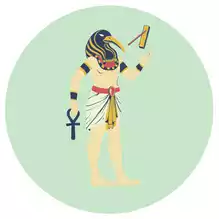
Thoth, the ancient Egyptian god of knowledge, wisdom, and writing, was an integral part of their religious culture. He was depicted as a man with the head of an ibis, and he represented justice, truth, and the magical power of words. He was a powerful figure in the pantheon of gods and was widely worshipped by both the upper and lower classes.
Thoth was believed to have been born of the sun god Ra and the moon goddess Hathor. He was thought to have a great affinity for knowledge and wisdom and, as a result, was associated with the moon and its phases. Thoth also hosted conferences with other gods, which were believed to be a source of knowledge and insight.
Beneath the surface, Thoth had a deep connection with the underworld. He was believed to be the one who helped souls safely traverse the path of the afterlife. He was also believed to be the one responsible for the weighing of souls in the Hall of Judgment. It was said that Thoth used a feather to judge the morality of a soul, deciding if it would be admitted into the afterlife.
In addition to his divine roles, Thoth was also a patron of scribes and the written word. He was believed to have authored numerous sacred texts and scrolls and was even thought to have invented the hieroglyphic script. It was believed that Thoth’s knowledge and wisdom could be harnessed by mortals, and many sought his counsel as a source of guidance.
Thoth was a powerful symbol of justice, truth, and knowledge in ancient Egypt, and he continues to be revered to this day. His knowledge, wisdom, and writing skills were valuable assets to the people of ancient Egypt, and his legacy continues to live on.
Anubis
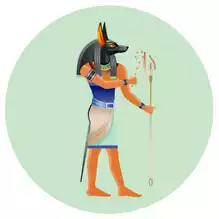
Anubis was one of the most significant gods of ancient Egypt, renowned for his role in controlling the afterlife and afterlife rituals. He was often portrayed as a man with the head of a jackal, wearing an embalmed robe, holding a flail, and an ankh cross. To the ancient Egyptians, Anubis symbolized death, the underworld, and the process of mummification.
Anubis was responsible for guarding and protecting the dead, and he was believed to weigh the souls of the deceased against the feather of Ma’at, the goddess of truth and justice, to decide their fate. He was also associated with embalming, the funeral procession, and the tomb itself. It was believed that Anubis was the one who protected the deceased in the afterlife, ensuring that the body and soul were reunited.
In addition to his role in death and the afterlife, Anubis was also seen as a patron of lost souls and the helpless. He was even seen as a protector of cemeteries, as he made sure that the dead were safe and taken care of. Prayers to Anubis were often made to help ensure that the deceased was guided safely to the underworld.
Anubis was an integral part of ancient Egyptian life, a part of their culture, beliefs, and rituals. He was respected and revered as a protector and a keeper of the dead, and his legacy continues to live on today.
Bastet
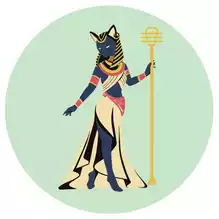
Bastet was an Ancient Egyptian goddess who was closely associated with cats and kittens. She was often depicted as a woman with the head of a cat, sometimes wearing a crown and carrying an ankh. Bastet was believed to be the protector and patron of Lower Egypt, as well as a symbol of fertility and motherhood. One of the most famous temples devoted to Bastet was located in the city of Bubastis.
Bastet was generally regarded as a benevolent goddess, but she was also feared for her ability to punish those who wronged her. She was known for her fierceness, particularly when it came to defending her children. As a symbol of protection, Bastet was often associated with the war god, Maahes, and depicted with a lion’s head.
In addition to her associations with cats, fertility, and protection, Bastet was believed to bring good luck and health to the Egyptians. People often made offerings to Bastet, such as small statues of cats, mummified cats, and jewelry. The Romans even adopted Bastet and her worship, referring to her as ‘Diana’.
Bastet remains an important figure in Egyptian mythology and is remembered for her role as a protector and guardian of the Egyptian people. Her influence can be seen in modern culture, often in the form of cat statues, jewelry, and other symbols of her patronage. Bastet’s legacy is still alive and well, and she continues to inspire people with her strength, grace, and beauty.
Ptah
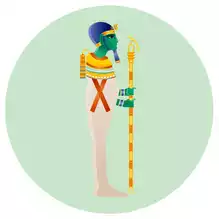 Ptah was an ancient Egyptian deity known as the god of craftsmen and architects. He was seen as the creator of all things and was associated with fertility, creativity, and rebirth. His image was often depicted as a man wearing a skullcap.
Ptah was an ancient Egyptian deity known as the god of craftsmen and architects. He was seen as the creator of all things and was associated with fertility, creativity, and rebirth. His image was often depicted as a man wearing a skullcap.
According to ancient texts, Ptah was considered to be a divine craftsman, a source of inspiration, and a source of skills used by craftsmen and architects. He was also thought to be a protector of the Pharaohs and their works, helping them to create great monuments and buildings. It was believed that Ptah brought about fertility and prosperity for the people, ensuring that their efforts bore fruit.
The cult of Ptah brought about a system of worship of the god, with temples and other shrines being built throughout Egypt. The priests of the cult also served as advisers to the Pharaohs, offering them wisdom and guidance in their endeavours.
As an archetype for creativity, Ptah’s influence has persisted through the ages, and still today, architects and craftsmen look to him as a muse and a source of inspiration.
Sekhmet
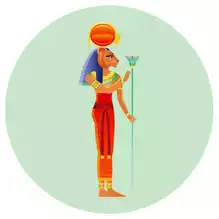
Sekhmet was an ancient Egyptian goddess of war and vengeance and was symbolically represented as a woman with the head of a lioness. She was known for her strength and courage and was believed to have been the guardian of Ma’at, the ancient Egyptian concept of truth and justice. Throughout history, she has often been seen as a protector of the innocent and a vanquisher of wrongdoers.
Sekhmet was thought to be the daughter of the sun god Ra and the sister of Bastet and Ptah. Her association with fire, destruction and healing was linked to both her father and her brother. As the goddess of war and vengeance, she was believed to be the one who could bring chaos to the enemies of the gods and could also protect and restore order. In many myths and stories, she is seen as a powerful force and a symbol of justice, with her fierceness being tempered with her compassion.
In the later Egyptian pantheon, she was often associated with the goddess Hathor and was thought to be the fiercer and more wrathful twin. She was often invoked in battles and was thought to bring victory to the faithful. Her worship was especially popular in Lower Egypt, and her temples were located in Thebes and Memphis.
Sekhmet is remembered today for her strength and justice and her compassionate nature. She was a protector of the innocent and a vanquisher of wrongdoers, and her legacy continues to resonate in modern times. Sekhmet stands as a reminder that even in the face of destruction and chaos, there can be compassion and justice.
The Love Spells of Ancient Egypt
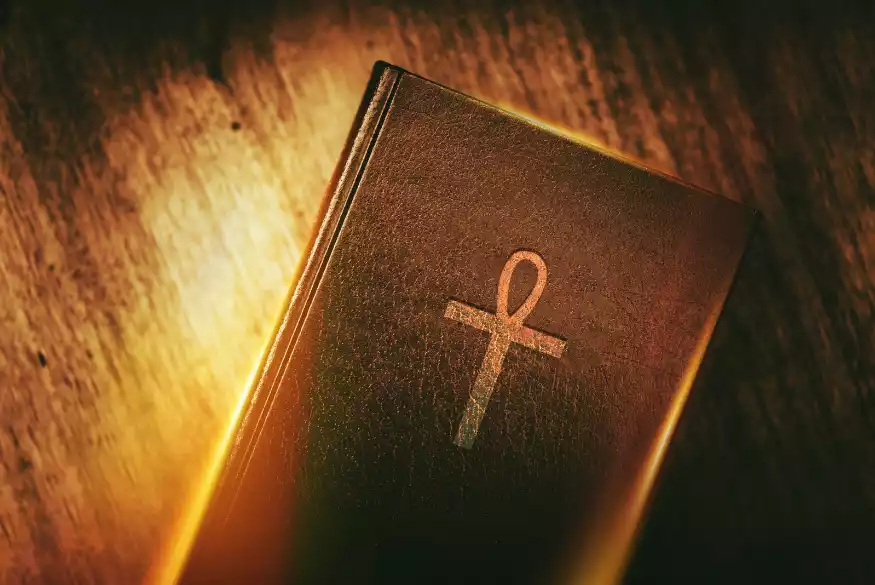
Egypt is a country with a rich and ancient history, and its culture has long been celebrated as a source of knowledge and romance. Egypt was also home to some of the earliest known love spells, dating back thousands of years. Throughout the centuries, these magic potions have become increasingly popular in homes across the world.
The use of love spells dates back to 5000 BC in Egypt, but they were mainly used by priests or shamans in rituals. These love spells were thought to encompass magical properties that could bring two people together and make them fall in love with each other. They might include ingredients such as honey, oil, or perfume combined with incantations or chants read out loud. Many texts from this era also suggest that these magical potions had the power to heal broken hearts and rekindle lost relationships.
Today, modern versions of these ancient Egyptian love spells are still being used by many people across the globe who believe in their ability to help them attract or strengthen true love. Many different kinds of charm bags can be made at home for protection against negative energy and to encourage finding true love – usually containing ingredients such as rose petals or herbs like basil or thyme which are believed to bring good luck in matters of the heart. Love spells are also becoming more popular as therapeutic tools for healing past experiences associated with relationships – helping us move forward and let go of painful memories associated with our romantic pasts.
Myths and Misconceptions
Egyptian witchcraft has been surrounded by many myths and misconceptions for centuries. One of the most common is that all witches are evil, which couldn’t be further from the truth. In fact, ancient Egyptian witchcraft revolved around honoring and connecting with spirits to promote balance and harmony – with practitioners known as ‘heka’ performing rituals or spells to protect or heal people who were suffering from physical or emotional pain.
Another misconception is that it was only practiced by women – but in Ancient Egypt, this wasn’t the case. Men and women could both practice heka, although it was typically more advanced if a person was educated in temples and academies first. Today, we recognize there are many forms of witchcraft, and they can be used for healing or protecting individuals as well as manifesting our desires into reality. It’s important to remember that its origins come from a place of love, harmony, and connection with the natural world – something that still resonates with us today.
High Priestess Memoona is a well-known and respected spell caster and magical practitioner with more than five decades of experience. She is a master of her craft, having used her powerful abilities to bring people joy, unconditional love, and prosperity. With her unique approach to spell casting, High Priestess Memoona has helped countless individuals manifest their life dreams and achieve their goals. Her expertise and dedication to the craft have made her a highly sought-after Spell Caster, and she is proud to be able to offer her services to those who seek her aid.

